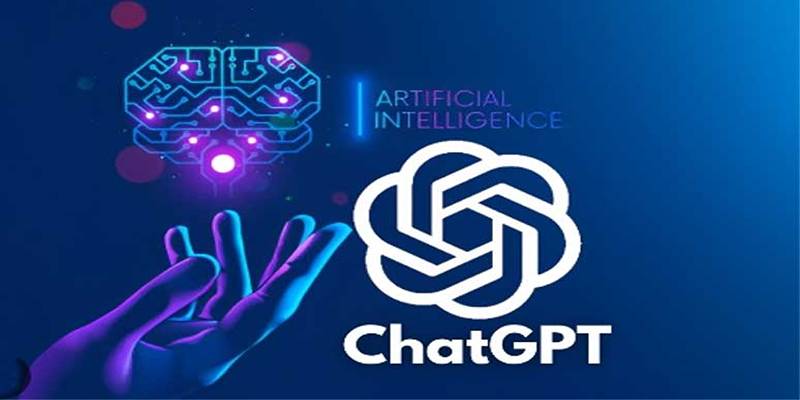Advertisement
Creating a compelling video game world relies heavily on strong storytelling, dynamic character development, and immersive dialogue. In today’s game development landscape, writers are expected to deliver narrative content that not only advances the plot but also enriches the player experience. With the increasing complexity of narrative design, developers are turning to AI tools like ChatGPT to support scriptwriting tasks, streamline workflow, and bring creativity to life more efficiently.
ChatGPT, a language-based artificial intelligence, offers game developers a versatile toolset for shaping dialogue, lore, and side content without compromising quality or originality. While it doesn’t replace a scriptwriter’s creative vision, it complements and accelerates the writing process by handling repetitive tasks and expanding ideation capabilities. This post outlines 6 impactful ways developers can use ChatGPT as a collaborative assistant during the game scriptwriting process.
Dialogue in games needs to be concise, emotionally resonant, and consistent with the character’s personality. It must feel authentic while also serving the game’s pacing and thematic tone. ChatGPT can assist writers in refining dialogue by removing overly complex phrasing, enhancing clarity, and adjusting tone to better fit the speaker's voice or situation.
It proves especially useful in games featuring branching dialogue trees or large numbers of interactable NPCs. Developers often deal with placeholders or rough drafts during early script iterations. ChatGPT provides a way to polish these lines, bringing out the natural rhythm, emotional subtext, and clearer intent. The AI doesn't just alter words—it understands context, making adjustments that preserve meaning while enhancing flow.
Non-player characters are central to making game worlds feel alive. Whether they deliver side quests, share lore, or add ambiance, each NPC must have a unique voice and purpose. Building out dozens or even hundreds of distinct NPCs can be time-consuming, and that's where ChatGPT helps.
Using descriptive background details provided by writers, ChatGPT can expand on character traits, motivations, and behaviors, helping each NPC stand out. The AI is capable of mimicking specific tones—gruff, playful, weary, optimistic—and generating dialogue consistent with those personalities. It allows writers to quickly sketch out distinct voices for background or secondary characters without diluting quality, giving depth to even the briefest of interactions.

Adding emotional layers to character interactions elevates the storytelling in any game. Emotional tone helps communicate a character’s state of mind, history, and relationship dynamics—all without lengthy exposition. For developers aiming to craft more emotionally charged dialogue, ChatGPT offers meaningful assistance.
By analyzing character arcs, current events in the storyline, or situational triggers, the AI can generate dialogue that captures a range of emotions: grief, joy, betrayal, fear, or determination. Whether it’s a heartbroken warrior or a rebellious teenager, ChatGPT adapts word choice and sentence structure to reflect emotional tension. It helps maintain immersion and strengthens the player’s connection to the narrative.
Lore is the backbone of worldbuilding in many video games. Codex entries—short texts that provide background on characters, places, events, or objects—help deepen a player’s understanding of the game's universe. For games with expansive or original settings, writing codex content can quickly become overwhelming. ChatGPT can assist by generating rich, interconnected lore entries that align with the existing world narrative.
Writers can provide foundational elements, such as a faction’s goals or an ancient event, and the AI can extrapolate relevant background content. From mythical relics to political hierarchies, ChatGPT builds out consistent and immersive lore.

Side quests often function as opportunities for world exploration, character development, or thematic subplots. However, coming up with original, engaging side quest content that complements the main story is not always easy. ChatGPT supports this process by offering fresh quest concepts based on existing game lore, location settings, or character roles.
The AI is particularly helpful in generating a variety of quest types, including fetch tasks, escort missions, moral dilemmas, or investigations. Writers can input a setting or character objective, and ChatGPT can develop side stories that align with those parameters. These ideas can serve as raw inspiration or be developed further into full quest arcs. By offloading some of the creative lift, ChatGPT frees writers to focus on polishing narrative threads and integrating them seamlessly into the game world.
Character barks—short voice lines triggered during gameplay—are essential for immersion, situational awareness, and dynamic world interaction. These lines must be brief yet varied, reflecting the character’s personality and adapting to different gameplay contexts. Manually writing dozens of these lines across multiple characters can quickly become repetitive.
ChatGPT excels in generating bark lines that vary in structure, tone, and content. Writers can assign general themes or scenarios—such as combat, stealth, or idle chatter—and the AI will produce lines that match the intensity and purpose of the situation. For example, a rogue character may whisper warnings while a warrior shouts battle cries.
It’s important to emphasize that ChatGPT functions as a collaborative tool rather than a creative replacement. The AI offers speed, variety, and structure, but it relies on human direction and judgment to ensure narrative coherence. Game writers remain the architects of storylines, themes, and emotional resonance, while ChatGPT serves as an intelligent assistant that reduces friction in content creation.
When used strategically, this AI model can support the writing team by generating drafts, inspiring ideas, and maintaining consistency across large scripts. It’s particularly valuable in the early to mid stages of development when writers are exploring different narrative directions or refining systems of dialogue.
ChatGPT has emerged as a powerful ally in the evolving field of video game scriptwriting. Its ability to enhance dialogue, support emotional expression, and expand worldbuilding makes it a practical addition to any narrative development toolkit.
From background lore to emotionally resonant exchanges, ChatGPT contributes meaningfully at every stage of script creation. It allows developers to prototype quickly, test narrative flows, and maintain consistency across expansive storylines.
Advertisement

DataRobot's Enterprise Suite helps businesses manage generative AI with governance, monitoring, and compliance for safe AI use

Ever wondered how decision trees decide on the best split? Learn how decision trees work, how to tune them, and when they shine as a model for your data

Explore the top 4 ChatGPT plugin store improvements users expect, from trust signals to better search and workflows.

Explore how LangChain helps developers create smarter, scalable apps using LLMs, tools, memory, and workflows.

Speak to ChatGPT using your voice for seamless, natural conversations and a hands-free AI experience on mobile devices.

ChatGPT is now on Android with a fast, mobile-first design—download the app and enjoy smarter AI chats anytime, anywhere.

Use Custom Instructions in ChatGPT to define tone, save context, and boost productivity with customized AI responses.

Learn how the UseChatGPT Copilot extension helps users write, reply, translate, and summarize text directly in the browser.

Explore 8 of the best AI-powered apps that enhance productivity and creativity on Android and iPhone devices.

What is a database, and why is it essential in managing information? Learn how databases keep data organized, secure, and accessible in everyday life

Ever wondered what plugins come standard with ChatGPT and what they're actually useful for? Here's a clear look at the default tools built into ChatGPT and how you can make the most of them in everyday tasks

This guide shows how to set up ChatGPT on Android and iOS for private, smooth, and on-the-go AI conversations.